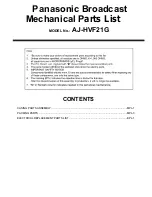
QTS-6000 Series
Analog Transmitter/Sensor
B71050-021-000-RB.doc
ELECTROCHEMICAL TRANSMITTER
JUL. 18, 2007
PRODUCT MANUAL
17
9.3.2 O
VERVOLTAGE
S
UPPLY
Symptom:
Constant High output.
The input is limited by a Zener diode and fuse. Overvoltage may blow the onboard Pico-fuse. The only
path for current to flow is through the signal line. Therefore the most likely occurrence will be that the
Burden Resistance (monitor input resistance plus wiring resistance plus intrinsic safety barrier if present)
will limit the current well below the fuse limit (see 9.3.1 above). The device will turn on, but the readings
will be high in the proportion of excess voltage over the Zener value of 39 VDC.
Corrective Action: 1) Measure DC Voltage at the terminals. Ensure supply voltage between 12 and 36
VDC is present. Correct as necessary.
2) Using the test jacks, check to see if the output of the transmitter is correct.
3) If no output, or high output, turn off power to transmitter (by disconnecting wires, if
necessary) and check the fuse. Replace as necessary.
4) If problem still persists there may be associated component damage. Replace
upper CCA or contact factory.
9.3.3 E
XCESSIVE
B
URDEN
R
ESISTANCE OR
U
NDERVOLTAGE
S
UPPLY
Symptom:
Constant Low output or possibly no output.
If the Burden resistance (monitor input resistance plus wiring resistance plus intrinsic safety barrier if
present) is greater than that specified for the particular supply voltage (see Figure 4 on page 6) then this will
limit the maximum signal output capability to less than full range. If the burden resistance is sufficiently
large, then the device may not turn on correctly.
Corrective Action: 1) Measure DC Voltage at the terminals. Ensure supply voltage between 12 and 36
VDC is present. Correct as necessary.
2) Disconnect power to the transmitter power/output current loop.
3) Disconnect wiring at the transmitter and measure resistance across the two wires.
4) If resistance is too high, either reduce the burden or increase the supply voltage.
5) Reconnect wiring and apply power to the transmitter.
6) Using the test jacks, check to see if the output of the transmitter is correct.
7) If problem still persists it may be caused by a cell that needs replacement or has been
effected by extensive operation in very low humidity (see 9.3.4 below). There may
also be unrelated damage to the CCA. Consult factory.
9.3.4 H
UMIDITY
P
ROBLEMS
Symptom:
Constant Low output, sluggish response, (Humidity too low).
Constant High output, unstable response, (Humidity too high).
The electrochemical sensor elements are designed to work continuously in an environment with a relative
humidity anywhere in the range of 15 to 90% RH non-condensing. The cells will withstand intermittent
excursions outside this range, but problems will show up if they are operated for too long at either too low or
too high a humidity.


































